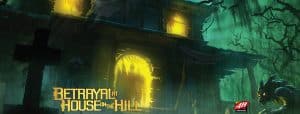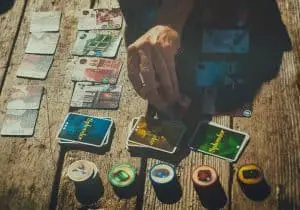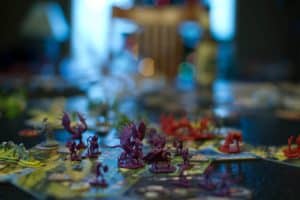Playing board games with a group of 6 people can be tough. The majority of board games out there are specifically suited for 2 – 4 players, as soon as you surpass this, you find that the amount of games available to you seriously diminishes.
There are even games out there that tout that they support a 6-player group, however when you get down to brass tacks, they play terribly at that player count.
In this article I have put together a list of what I believe the best 6-player board games are. These are games that play awesomely with a group of 6-players and manage to keep all players entertained and involved in the game with not too much waiting around.
Let’s get stuck in!
Top 10 Best 6-Player Board Games
- Codenames
- 7 Wonders
- King of Tokyo
- Deception: Murder in Hong Kong
- Zombicide Season 2: Prison Outbreak
- Twilight Imperium
- Betrayal at House on the Hill
- Catan: 5 -6 Player Expansion
- Colt Express
- Mission: Red Planet
1. Codenames

Players: 2 – 8
Duration: 15mins
Codenames is a brilliant spy vs spy word guessing game that is perfectly suited for the 6-person player count.
The game has players split into two opposing teams which represent rival spy networks with one player on each team taking on the role of ‘spymaster’.
In the game there are 25 characters on the board (made up of cards with 1 word on them). The Spymaster knows the secret identities of all 25 characters, whereby other players on the team only know the agents by their ‘Codenames’ (the word on the card).
Of the 25 characters, there are 8 agents on one team, 9 agents from the other team, a deadly assassin and 7 innocent bystanders.
The idea behind the game is that the spymaster must give clues to his team in a way that they can identify the who the agents are that are on his team – the trick is that the spymaster is only able to give these clues to the team using one word and one number (the number relating to how many cards on the board the clue relates to).
While playing, this mechanic is hilarious. When you play with a ‘creative’ spymaster it can be super fun and easy, however it’s just as fun watching a spymaster squirm as they struggle to think of clues!
There are other quirks in the game as well. For instance, one of the characters is a deadly assassin, which the team needs to avoid completely. If the team picks him, the game ends in defeat.
The two teams’ goals are to correctly pick their own agents out of the 25 agents on the board, while avoiding the other teams’ agents, the innocent bystanders and the assassin.
If you pick correctly and uncover one of your agents, the team gets to go again. If you pick an innocent bystander the round ends and the next team gets to play. If you pick the assassin – GAME OVER MAN!
Rounds continue until one team uncovers all their agents or is eliminated by the assassin.
Bottom Line
Codenames is one of the best 6-player (or more) games around. It’s easy to learn and play, involves everyone equally and is super fun.
If everyone isn’t cracking up laughing, you’re doing it wrong!
The game is quick to play and can be played over and over again with different spy masters each time. You can even mix the teams up each time if you want.
Pros:
- Quick 15min play time
- Super easy to learn
- Suitable for all players (kids included)
- Really really fun
Cons:
- Not a traditional board game
- Lacks depth
- Bit of downtime if spymaster struggles with clues
2. 7 Wonders

Players: 2 – 7
Duration: 30mins
7 Wonders is a highly visual strategy card drafting game where players take on the role of a leader of one of the 7 great cities of the ancient world!
In the game, each player needs to collect resources and build their empire through the three ages, with the player having the best city at the end of the third age (most victory points) winning the game.
7 Wonders is super easy to learn and can easily be picked up while playing. The back page of the rule book has an easy reference guide for what each card does, as well as how to work out the score.
In the game there are three rounds (called ages). In each age, players draw cards in turns from a deck passed around the table. Each age allows players to play six cards which develop their cities in different ways – from construction of buildings to advancing weaponry and military presence.
Players need to think strategically in order to win the game. There is very little luck in the game and many different paths to victory. Players need to think ahead when choosing their cards during the drafting stage. Some cards have immediate benefits, while others take time to develop AND as the deck is passed around, there is the chance that another player will foil your plan.
The key to the game is paying attention and adapting your strategy based on how the other players are playing! If you win 7 Wonders, you know you won fair and square!
At the end of each age, players tally up their military strength and compare it to neighbouring cities and divvy out ‘military points’. These points count towards a players overall points at the end of the game.
At the end of the final age, all military points and points based on cards played, development of the city etc are all tallied with the player having the most points emerging victoriously.
I love the card drafting aspect of 7 Wonders. As the deck is passed around the table you need to make some seriously hard decisions. Do you take a card that benefits you now? Can you see what your opponent is planning and therefore sacrifice your card pick for a card that you know will foil their plan?
The game is great as it has a constantly changing meta and players need to adapt their strategies and play styles accordingly. This also makes the replay value of 7 wonders so high.
Bottom Line
7 Wonders is a great 6-player card drafting strategic board game that is fun to play and has all players constantly interacting and involved.
The game is super-fast to play and easy to learn so you can play multiple games back to back.
Due to the nature of card drafting and multiple paths to victory – no two games are ever the same and the game offers loads of replay value.
Pros:
- Quick and easy to learn game
- Many expansions available that build on the core game
- Minimal luck involved
Cons:
- Not very deep for a strategy game
- Instructions can be a bit cryptic at times
3. King of Tokyo
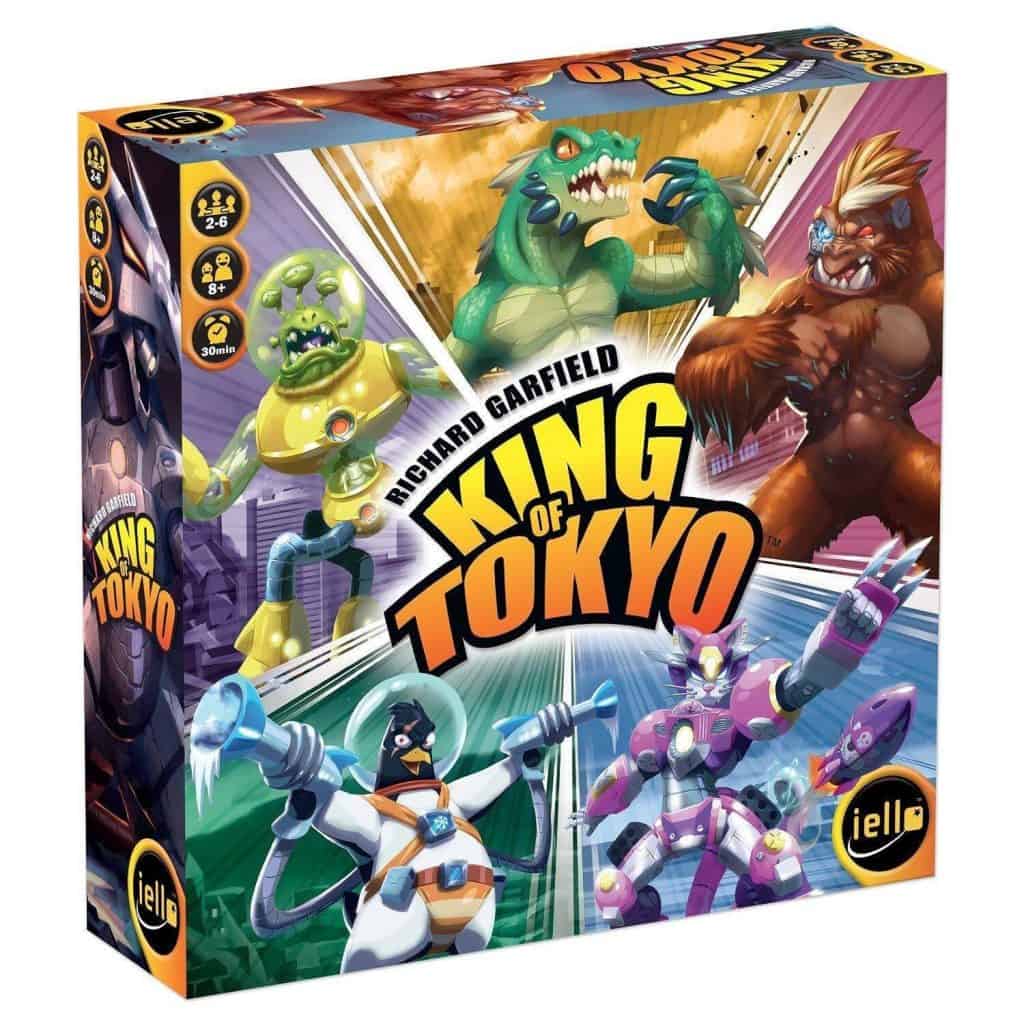
Players: 2 – 6
Duration: 30mins
Another quick 6-player board game that is super-fast paced and interactive is King of Tokyo.
The game is set in the city of Tokyo Japan where each player takes on the roll of a giant monster to fight for control of the city (think Godzilla on steroids).
Players use dice during their turn to determine the actions they can take on the board. There aren’t that many actions, so the gameplay is very straight forward and fluid.
Each turn a player can choose to:
- Attack an opponent;
- Gain energy to purchase upgrades;
- Recover from an attack; or
- Obtain victory points.
The game does have elimination – so survival is key. If your monster is defeated, it is removed from the board and you sit on the sidelines watching as the other players battle for control of the city.
King of Tokyo continues until a player earns 20 victory points or all other monsters are eliminated from the game.
One cool aspect of the game is the variety of cards you can play that help improve your chances of victory. There are cards that help recovery of your monster so that you can fight more and cards that help you obtain victory points faster.
While not super in depth, the game offers a lot of fast-paced entertainment for what it is and definitely earns its spot on this list.
Bottom Line
King of Tokyo is a fun light-hearted dice rolling game that is great to play as a 6-player group.
The action is fast paced and interactive and strategy is simply judging when is a good time to enter Tokyo and attack and when to rest and heal.
Games are over really fast and you can generally cram a whole bunch of plays in a gaming session.
It’s also a great game to play with kids!
Pros:
- Super-fast gameplay
- Kid friendly
- Great cartoon style art and component quality
Cons:
- Dice means luck!
- Eliminated players need to wait on the sideline
- All monsters have the same abilities
4. Deception: Murder in Hong Kong
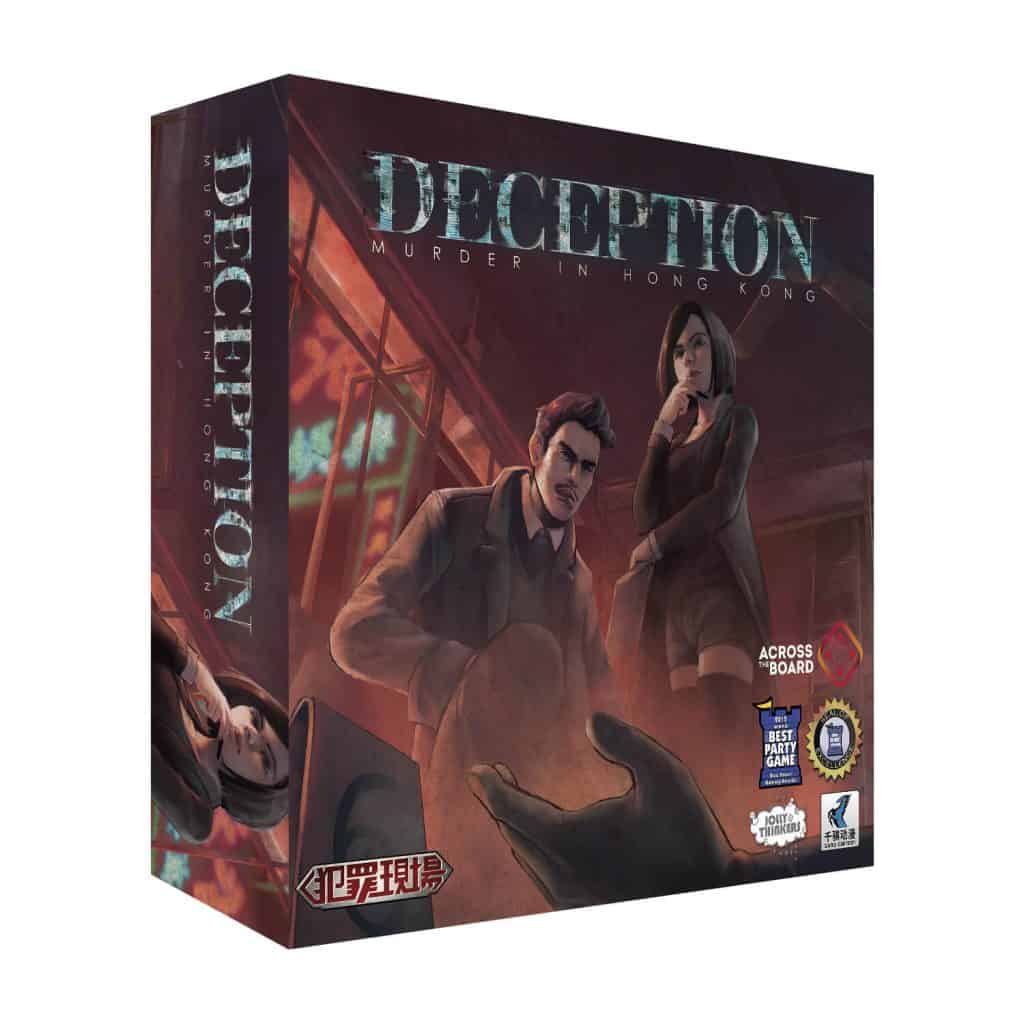
Players: 4 – 12
Duration: 20mins
If like me you are into hidden identity games, then Deception: Murder in Hong Kong (Deception) is a must have game for when you have large groups.
Set in Hong Kong (duh)… Each player takes on the roll of an investigator, summoned to investigate a murder that has occurred. The twist – one player among you is the murderer. Nothing new so far, but the game does have some nuances that set it apart from other murder mystery games.
The game starts with each player being handed out cards with the role they will be playing which are kept secret from all except the player who is ‘the forensic scientist’.
The forensic scientist knows exactly who every player in the game is… but can only communicate using clues (sound familiar? The game is very similar to codenames!).
A cool aspect of Deception is that cards are not dealt out at random. In fact, the murderer player actually gets to pick the weapons used for the murder as well as the evidence that is left behind.
So, in practice you have a bunch of investigators trying to solve a crime, a murderer trying to use evidence to mislead the investigators and a forensic scientist who knows everything but is not allowed to say anything – except in clue form!
Playing Deception as a 6-player group is the sweet spot as it opens up two additional roles in the game:
- Accomplice – this player knows who the murderer is, the weapon used and the evidence left behind.
- Witness – knows the players who are the accomplice and murderer but does not know which is which or how the murder happened.
The game is simple to play. The investigators start the game with 4 clues and have to work through these to determine who the murderer is and how they murdered their victim. If successful the investigators win.
The accomplice and murderer on the other hand have to throw off the investigators and get away.
Overall, the game is super fun to play and has LOTS of player interaction.
Bottom Line
Deception: Murder in Hong Kong is a brilliant hidden identity game that hits a sweet spot when played with 6 players.
The game is quick to play and has a lot of player interaction, accusations and laughter.
Deception is a brilliant take on a murder mystery game and can be played over and over again.
Pros:
- Easy to learn
- Lots of player interaction
- Spurs heaps of accusations and suspicion among players
- Unique take on a murder mystery game
Cons:
- Game is a bit unbalanced when it comes to investigators
5. Zombicide Season 2: Prison Break
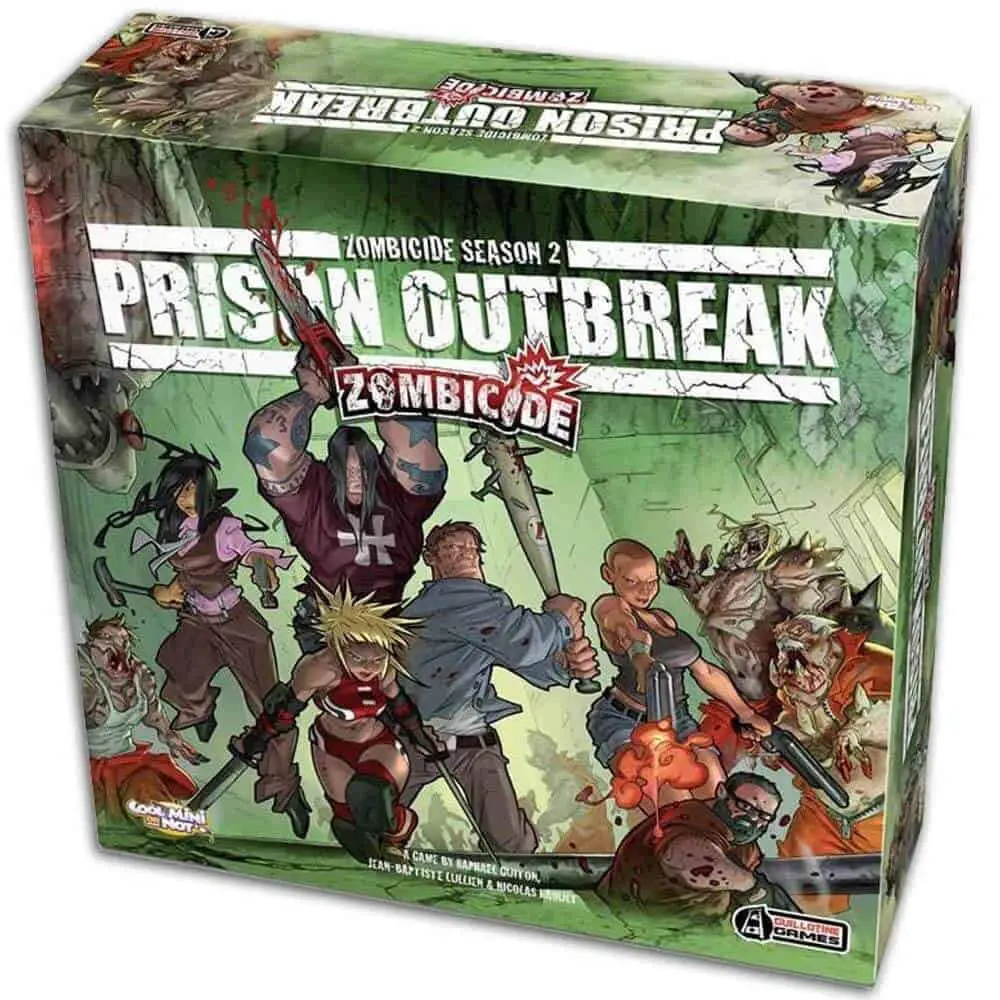
Players: 1 – 6
Duration: 60mins
Zombicide Season 2: Prison Outbreak is a follow on to the super popular zombie game ‘Zombicide’.
Unlike the original game however, Season 2 is all about indoor, close combat action with the zombie hoards. It’s all about being trapped and hacking and slashing your way out of danger – awesome!
The game board is made up of a maze of tight rooms, narrow alleys with doors every direction, switches, buttons, barbed wire fences and secret locations. Meaning there is a perfect blend of action and exploration while playing.
Season 2 also introduces the new ‘Berserker Zombie’. This zombie is immune to ranged weapons, forcing players to engage in close quarter hand to hand combat or flee!
The game is played cooperatively as a team. Each survivor has special abilities which compliment each other and can create some really crazy combos when fighting off groups of zombies.
The game comes with several missions for players to play through which all tie together to make an overall campaign and narrative that makes the zombie theme really shine. The overall campaign objective is to clear out the prison of zombies and convert it to a shelter for survivors to congregate and keep safe during the apocalypse.
Narrative aside, the game is still all about brutal slaying of zombies and that’s the part of the original Zombicide I really enjoyed. Using unique and brutal weapons like chainsaws to slice your way through a crowde of zombies is a great stress reliever and its great to do it as a team!
Bottom Line
Zombicide is a great cooperative zombie hack and slash game to play as a 6-player squad. The game builds on the super popular Zombicide title and adds new and unique mechanics which are a great addition to the game.
The game also has a great theme and missions which ultimately tie the game into a great story arc and allow the game to be played over several sessions.
Pros:
- Great components, artwork and build quality
- Awesome missions and story line
- Brutal zombie hack and slash (not for kids)
Cons:
- The game is expensive
- Depending on team composition – can sometimes feel unbalanced
6. Twilight Imperium

Players: 3 – 6
Duration: 240mins – 480mins
Twilight Imperium is an absolute monster of a game. Weighing in at 16 lb and coming in a 2×1 foot box, it is Fantasy Flights flagship board game (and it is truly epic!).
The current version of the game is the fourth iteration since its release over 20 years ago and along the way many tweaks and improvements to the game have been made.
Twilight Imperium takes campaign gaming to a whole new level, taking a whole day to play, and lucky for this article – 6-players is the sweet spot.
In the game, players each take on the role of 1 of 17 unique alien races, each looking to build influence in the galaxy and build out their galactic empires.
The game allows players to travel to distant solar systems, colinize planets, research and advance military tech, engage in huge epic space battles and influence political powers to ultimately gain control of the galaxy.
The board of Twilight Imperium is made of modular hexagonal tiles that provide a truly unique board every time you play. Each tile can consist of things like planets, systems, wormholes, supernovae, asteroid fields and a whole swag of other cool space things.
As expected, each player starts with a modest amount of technologies and capabilities available to them and need to use these to branch out and build their empires from scratch. The game provides each player with a unique secret objective which, if completed, earns the player victory points.
The first player to reach 10 victory points wins the game.
If you are interest in how to play Twilight Imperium, this video explains the game quite well:
An aspect of the game I love is the sandbox like freedom the game gives you when choosing how you would like to play and your path to victory. You can focus purely on military tech and move around the board bullying other players, or alternatively you can use political sway and diplomacy to win the favor of other systems. The choice is yours and makes Twilight Imperium a truly epic experience.
Due to its complexity and long play time, I have listed Twilight Imperium at number 6. However, if I was writing this article purely for hobbyist gamers – Twilight Imperium would be an easy first pick.
Bottom Line
Twilight Imperium is a truly epic space campaign that every hobby board gamer should have a copy of.
The game offers a truly grandiose campaign that lasts a whole day and allows players to truly play how they want. The game has polished rules, insanely good board pieces and a modular board that makes every play through unique.
Twilight Imperium truly is the best hobbyist 6-player board game the universe has to offer.
Pros:
- Gigantic campaign of epic proportions
- 17 different alien races for players to choose from
- Over 300 high quality plastic miniatures
- Sandbox like feel when choosing a strategy
Cons:
- Complex game suited to hobbyist gamers
- Takes a whole day to play (not suitable for some)
7. Betrayal at House on the Hill
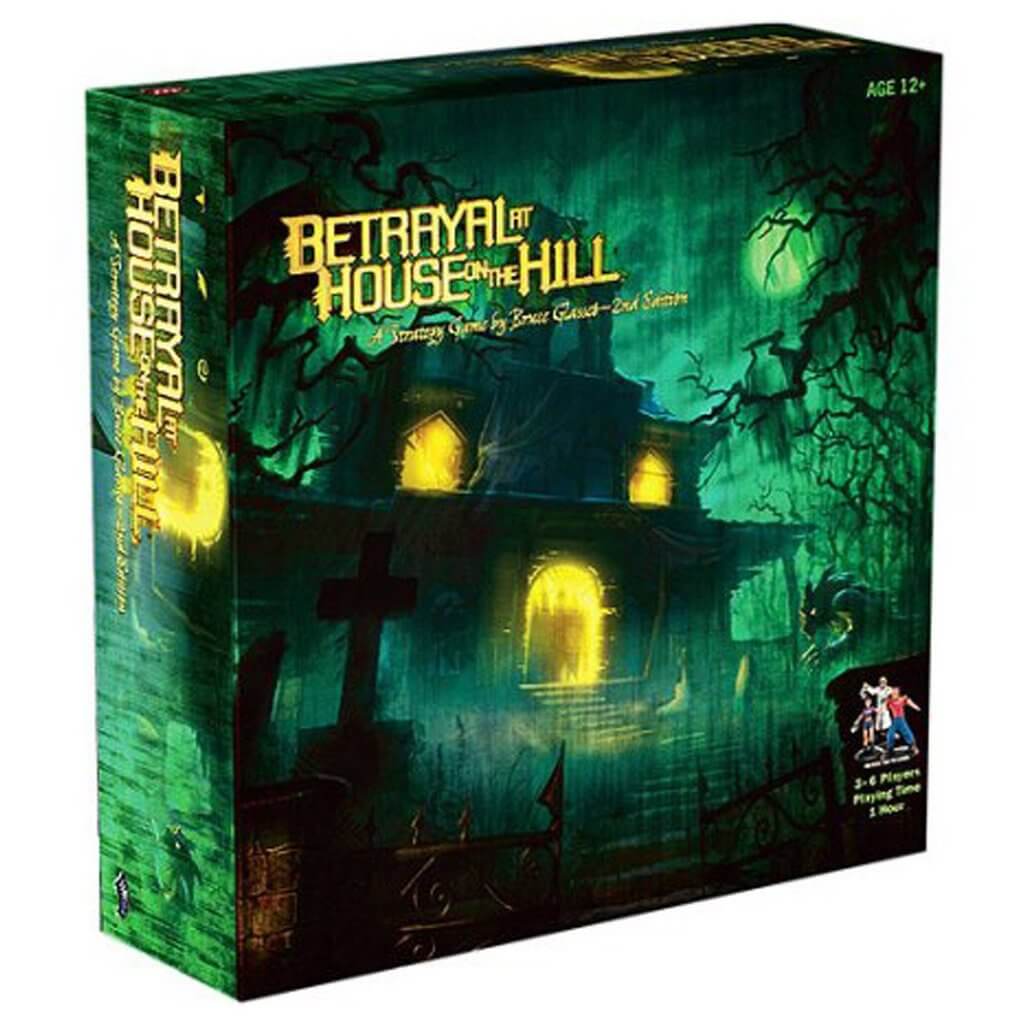
Players: 3 – 6
Duration: 60mins
Betrayal at House on the Hill is a game that keeps getting pulled out at my game nights. A semi-cooperative game that seems to include every single horror trope in existence.
The game is all about players entering and exploring a haunted house and uncovering the different rooms, nooks and crannies that make up the house.
The way this is done is by drawing tiles from a ‘deck’ of tiles to create the house as you play, meaning the house is completely different each time you play.
At the start of the game, players choose the character they would like to play (each with unique stats for things like movement, sanity etc) and enter the house.

From then on, the game is split into two phases:
- Exploration Phase: Where players work cooperatively to explore the mansion and attempt to increase stats and find items to help them along the way; and
- The Haunt Phase: This is where things get really exciting. During the haunt, a player in your team betrays the rest of you and spends the rest of the game trying to destroy them as they work together to try and escape the house.
Every game of Betrayal is randomised including the haunt. There are over 50 different haunt scenarios included in the game meaning you would have to play an incredible amount of times to get a game that is even remotely similar to one you’ve played before.
The haunts are also really cool. You can go from fighting witches and serial killer to ghosts and hoards of the undead, and the fact its random in terms of who betrays the team and also which scenario you get makes the game truly epic.
Bottom Line
Betrayal at House on the Hill is a fantastic horror-themed semi-cooperative game that has an enormous replay value.
The game is easy to set up and learn and the different haunt scenarios are super varied, ranging from the truly creepy to the hilarious.
Pros:
- Huge replay value
- Great haunt feature to find traitor
- Massive variety of scenarios during the haunt
Cons:
- Due to the randomness – sometimes the same player can be the traitor multiple playthroughs
- Some scenarios can be unbalanced (both to survivors and traitor depending)
8. Catan: 5 - 6 Player Expansion
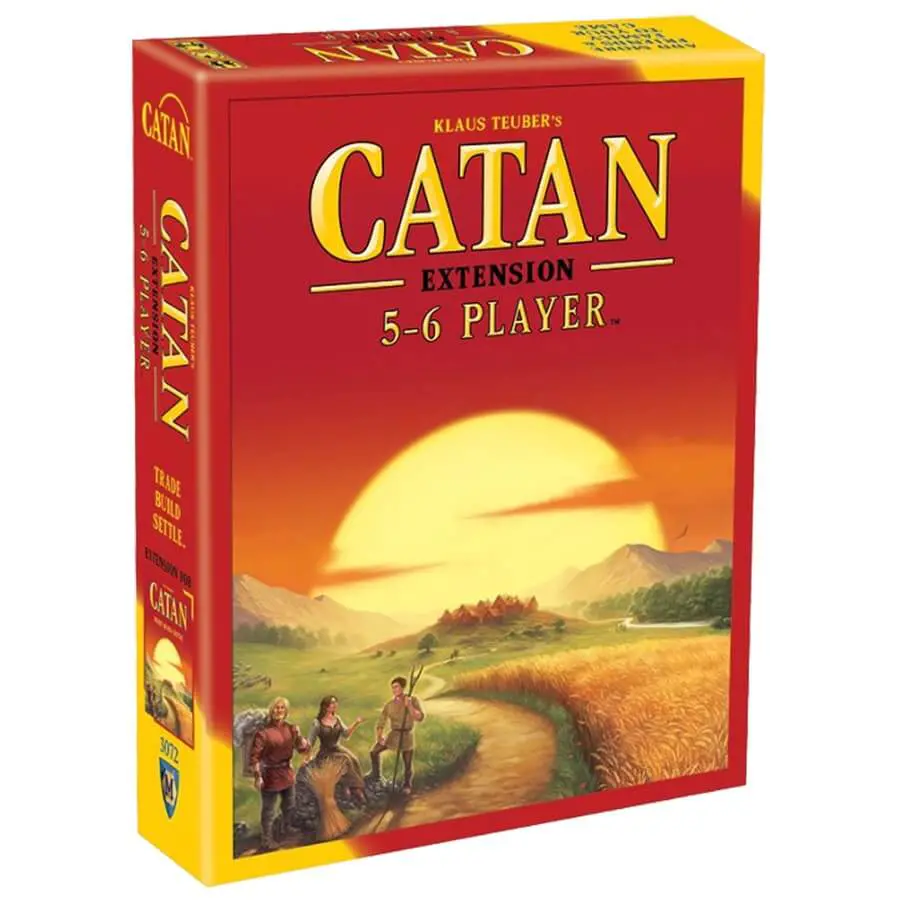
Players: 5 – 6
Duration: 60mins – 120mins
If you have read my other articles, you will know I am a huge fan of Catan.
One of the most famous board games around, Catan has been a favorite at the table of board gamers for over 20 years and there are a bunch of expansions that build on the core game.
The idea of the game is that players are all trying to settle the isle of Catan. To do this, they need to use strategy, cooperation, and a bit of luck. This game has great mechanics and interaction among players and there are over 143 ways to win the game.
By default, Catan is a game that accommodates only 3 – 4 players by default. However, there is an expansion to the game that allows you to extend this to 5 – 6 players, taking the proven popular game to higher player counts!
To be completely honest, Catan is a game that is perfect to play at all player counts, but the option to expand the base game to up to 6 players is great to have!
Bottom Line
The Catan: 5-6 player expansion takes the classic game of Catan and adds tiles and extras enabling an additional 2 people to play.
Catan is by far one of the best gateway board games and is full of player interaction, strategy and has been proven to be one of the best gateway board games for new players.
Pros:
- Adapts the original game of Catan to enable up to 6 players to play
- Game plays just as well with 6 players as with 4
Cons:
- Additional cost required to buy expansion and base game if you don’t already own it
9. Colt Express

Players: 2 – 6
Duration: 30mins – 40mins
Colt Express is a tongue in cheek game, where players take on the role of outlaws in the year 1899 who try to rob the Union Pacific Express train.
It’s each for his own in Colt Express and the aim of the game is to one up your fellow outlaws and move up the train, steal the loot and escape before getting shot by a fellow player or captured by Marshal Samuel Ford.
The game is a programmed card playing game, which means players take turns placing cards in a common pile in the centre of the table and then flip them over one by one carrying out the actions on the back of the card.
This means players always need to be thinking 2 or 3 steps ahead and try to second guess what the opponents will play. It’s the uncertainty that makes this game so intense and exciting and it really can come down to the wire who runs away with the loot.
Actions players can perform with cards are to shoot at fellow players, move up the train, fight someone, collect loot or even move the Marshal into a carriage with other players to force them onto the roof.
The game board is made up of a highly detailed 3D locomotive train and cars, which you get to assemble before starting the game and are really high-quality pieces.
The game doesn’t take too long to play and is really intense and exciting the whole way through. One round you could have a golden run right to the end of the train and take all the loot, while another you could be stuck 3 carriages behind everyone else shooting at nothing – and it’s the unpredictability of the game that really makes it shine!
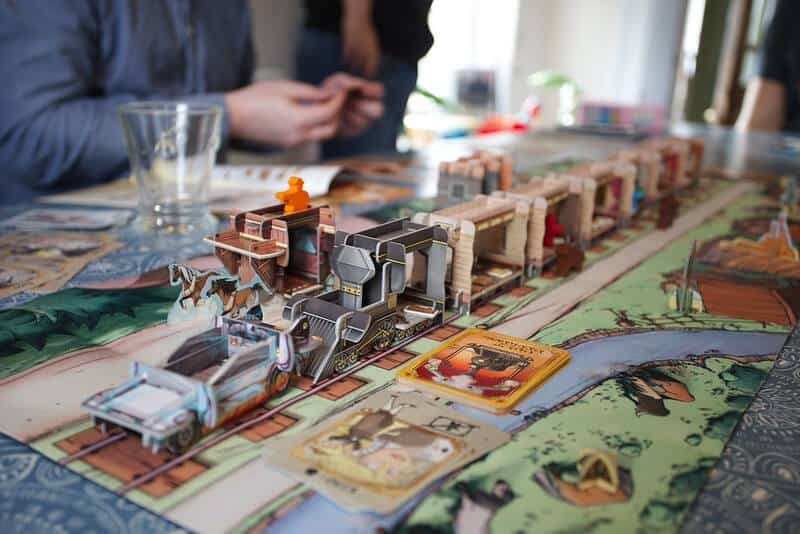
Bottom Line
Colt Express is a great tongue in cheek, light-hearted western train hijacking game that relies on unpredictability and fast paced action to deliver its thrills.
What the game lacks in depth it makes up for in its intense nature, with most games coming close to the wire and a simple card choice away from leaving the train with all the loot or being left empty handed!
Pros:
- Fast action gameplay
- Hilarious game that will have all players cracking up
- No downtime between turns
Cons:
- The game is 3D – so can be a bit fiddly
- Lots of uncertainty / luck which may not appeal to some
10. Mission: Red Planet

Mission: Red Planet is set in an alternate timeline in the year 1888. The world is comprised of steampunk-esk machinery and is quickly running out of the minerals needed to power these machines.
That’s where the players come in. Each player takes on the role of a mining company who have recently discovered that Mars has an abundant (yet finite) supply of celerium, sylvanite and ice which are urgently needed back on earth who has long since depleted its natural resources.
Each corporation (player) gets to control a team of 9 astronauts that will travel to the red planet. Each astronaut has unique abilities that are required to carry out the multiple objectives on the planet.
At the heart of the game, Mission: Red Planet is all about area control and secret role cards that players choose at the start of the game.
The secret role cards chosen by each player at the start of each round determines which spaceships the astronauts controlled by them intend to board and the actions they plan to execute during that turn (e.g blowing up other rockets, mining for minerals etc).
Each spaceship that is set to go to Mars lands in different areas of the red planet which are rich in various minerals. Part of the challenge is to try and guess your opponents’ plans and see if you can sabotage them.
Bottom Line
Mission: Red Planet is a game that will have players constantly trying to outthink their opponents. The trick to winning the game is to be able to outthink and adapt to the way the other players are playing and finding ways to sabotage their plans.
Overall a super fun game to play with friends.
Pros:
- Easy to learn and teach
- Little to no downtime
- Great quality components
Cons:
- Bonus point scoring for side quests can be a bit overpowered
Final Thoughts
There you have it. A list of what I believe to be the top 10 best 6-player board games.
It was hard work cutting the list down to 10, as really there are a bunch of great party games that are awesome to play as a group of 6.
However, I tried to keep things varied and include games that would appeal to a larger range of gamers, with different interests and styles they like to play.
I would love to hear your opinions about the games above, or if you think a game deserves a spot in the list in the comments below!

